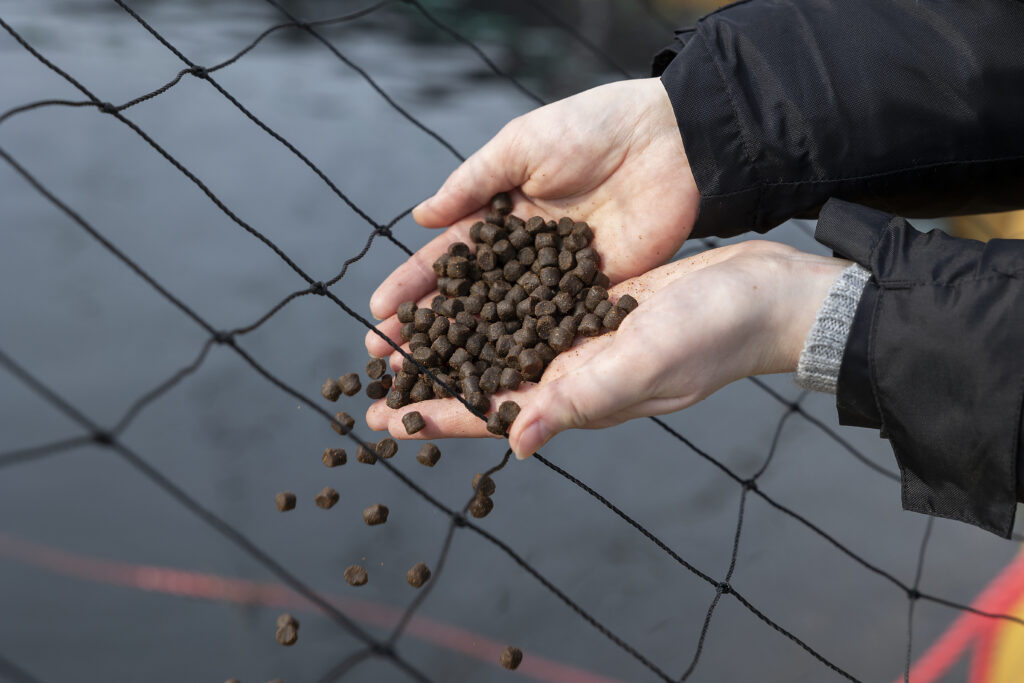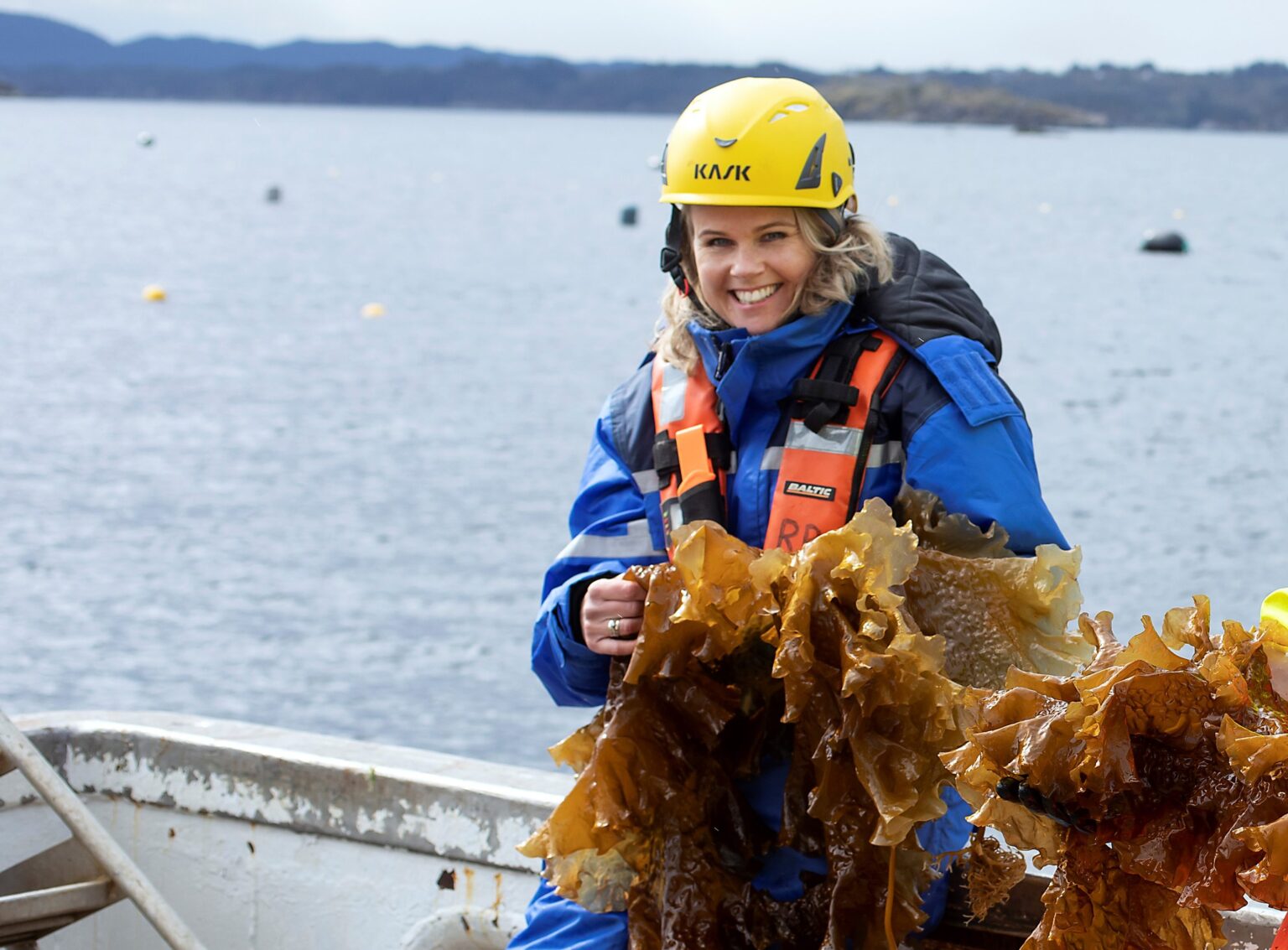Nina Stangeland at Ocean Forest (Lerøy) outside Bergen. Photo: Silje K. Robinson
The aim with the report is to contribute to more knowledge sharing, strengthen the focus on future sustainable feed ingredients and support the foundation of companies` strategy processes around future feed ingredients.
A fitting proposal from the government
According to the government, all feed to farmed fish and livestock shall originate from sustainable sources. This was stated a couple of days ago by Minister of Research and Higher Education Ola Borten Moe as a part of their long-term plan for research and higher education.
They propose to prioritize sustainable feed as one of two public missions going forward. According to the Minister of Fisheries and Ocean policy, Bjørnar Selnes Skjæran, the public mission will contribute to more sustainable feed through the development of new technological solutions and utilize more local raw materials, which also gives an opportunity for increased established value, employment, and export.
– When we look at the aquaculture`s needs today, the government`s proposal is spot on. This is important to develop the industry, to reduce the climate footprint from feed and help us produce more sustainable farmed fish from Norway in the future, our Managing Director Nina Stangeland says.
She welcomes the proposal and states that she looks forward to seeing them follow up with national incentives and public funding.
– Because it means that we will need to work from several angles. We must improve the footprint and sustainability of existing feed ingredients, continue to work with novel feed ingredients and increase the work with circular solutions across bioresources in order to meet the demand of future sustainable feed ingredients, Nina adds.
The fact is that over 70 percent of the climate emissions in aquaculture originates from feed and feed production. In addition, Norway imported 92 percent of the ingredients to fish feed in 2020 and only 0,4 percent of the feed was classified as novel, sustainable feed ingredients. This means that there is a big potential for positive consequences for actions within this field.
Sustainable feed will have a big impact

While numerous efforts are ongoing, we are still left with a need for novel, sustainable feed ingredients. Without a breakthrough on this field, the industry cannot achieve significant growth from the status quo.
Photo: Silje K. Robinson
Addressing the topic of “Future Sustainable Feed ingredients” we have gathered research institutions, industry forerunners and a panel of sector specialist to sum up the accumulated knowledge as well as to point out the major barriers which needs to be addressed to speed up the commercialization of future sustainable feed ingredients.
According to the Minister of Minister of Fisheries and Ocean policy research-based knowledge and competence are more important than ever to understand and solve the challenges we face.
On that note, the report “Future ingredients for salmon feed” will be published October 27th, and we hope it will lead to further discussions and actions towards the industry`s – and now the government`s – goal, to give our farmed fish sustainable feed.
